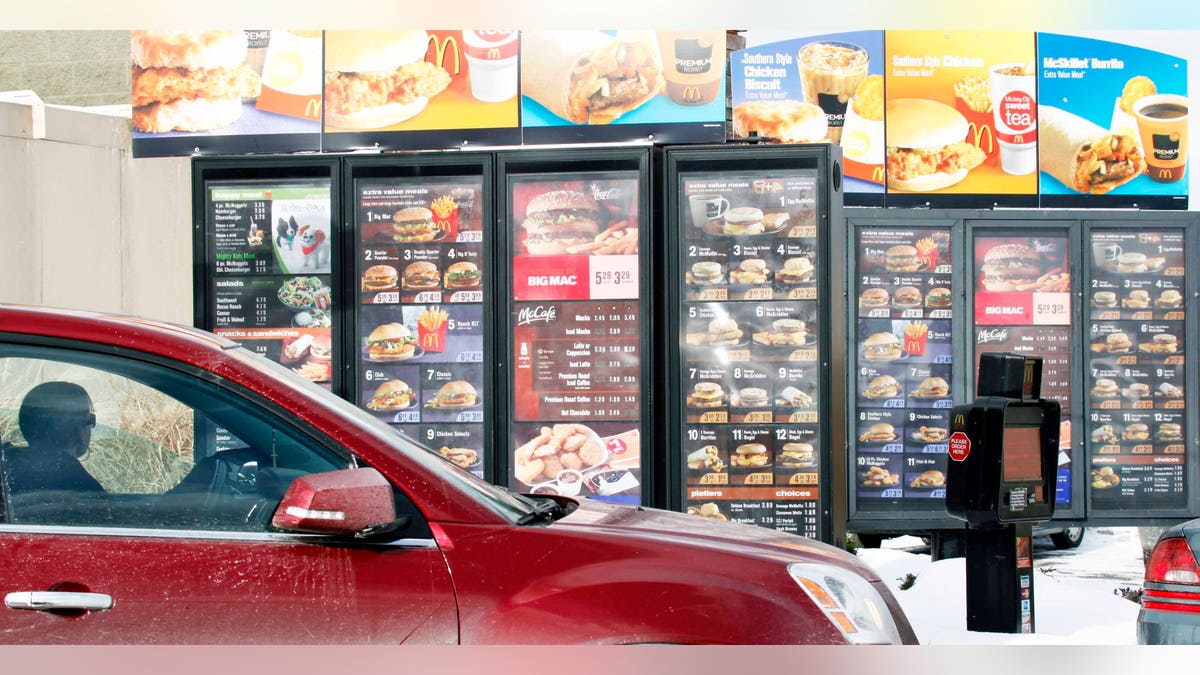
McDonald's is working to improve order accuracy at drive-thru windows. (AP)
McDonald’s latest move to improve customer satisfaction is targeting its drive-thru business.
In a move to make the ordering process more personal and boost accuracy—the chain has started to adopt a new ordering program executives are calling “ask, ask, tell” which allows for three separate opportunities to make sure that an order is correct, reports Bloomberg.
“Ask, ask, tell” started over the summer as an optional program for franchisees, who own about 90 percent of the chain’s 14,350 American stores. Whether customers asked for extra sauce or no pickles, the basic process starts with an order. Then an employee repeats the full order and asks if it’s correct, then again at the payment window. The “tell” part comes in when the employee hands over the bag and reminds the customer what’s inside.
It may be a little time consuming but McDonald’s owner Terry Smith from southern New Jersey, said he’s seen order accuracy improve by 2 to 3 percentage points since his stores rolled out ask, ask, tell.
“You’re probably going to add a couple seconds, which I don’t think will be huge as long as you’re creating a friendly experience -- and getting the order right,” Smith told Bloomberg. “Customers are getting the items that they want.”
According to an October report from QSR Magazine, fast food drive-thrus around the country are getting slower. In 2014, McDonald’s got about 88 percent of its drive-thru orders right, better than some rivals, including Wendy’s, but it still performed worse than Taco Bell and Chick-fil-A.
But the longer wait times are being attributed in part to efforts like this one to make sure orders are right.
“They’ve got to get it right in the drive-thru because it touches so much of their business,” Peter Saleh, an analyst at BTIG Research, told Bloomberg. “Things are moving in the right direction.”
Drive-thru meals account for a huge chuck of the Golden Arches’ revenue. About 70 percent of McDonald’s sales come from people who never leave their cars, according to Bloomberg.
In addition to promoting accuracy, corporate has asked restaurant locations to turn off prerecorded greetings at the drive-thru window and address each customer personally in real time. And when customers get to the window, employees are expected to hand over paper bags with the tops open so diners can check out what’s inside before driving off.
Some McDonald’s owners say achieving 100 percent accuracy is basically impossible.
“We’ve got humans working in the drive-thru. There’s just no way to automate that,” said Dick Adams, a restaurant consultant in San Diego and a former McDonald’s store owner.
But other chains are working around human limitations.
Starbucks is introducing video screens at 2,400 U.S. drive-thru locations soon in addition to its mobile according roll out which allows customers to customize drinks and prepay before pick. The screens will allow customers to see employees in the store and is another move to improve efficiency while also personalizing the drive-thru experience.




















